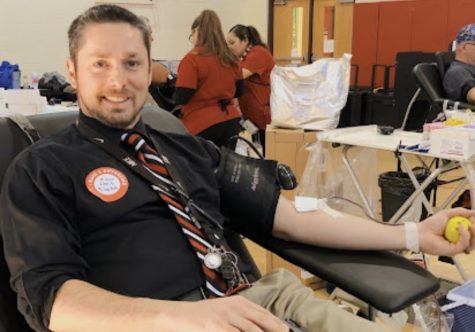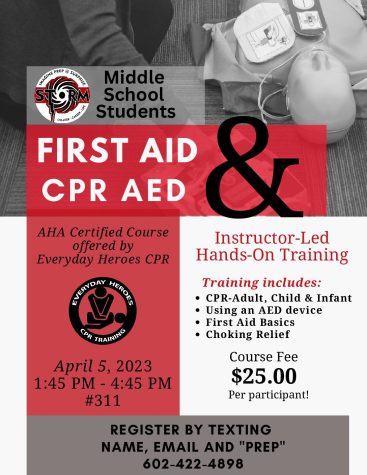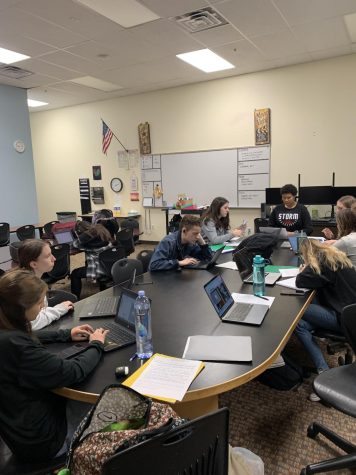Helping Save Lives
The blood drive, organized by teacher and club facilitator Gia Lowell and National Honors Society (NHS), took place on Feb. 8 from 8 a.m. – 3 p.m. in the gym. Donations came in from staff, students, and members of the community. Students aged 16 & 17 can donate with permission from their guardian, 18 and older can choose to donate on their own. Our school has been hosting the blood drive on and off for the last six to eight years according to our principal Chris McComb. While speaking with McComb he shared his thoughts on the importance of the blood drive.
“I think it’s important because we are trying to focus on a holistic approach to the community. We thought it was a unique opportunity for not only the adults in the building but for the kids that can donate. The first time some of these kids will donate is because it’s here at the school and it’s convenient,” McComb said.

McComb believes if you are able to donate blood it is something everyone should consider doing.
“I think if you haven’t done it before and you’re healthy and cleared to do it I would encourage everyone to give it a shot,” McComb said.
High school English teacher, Megan Werner, who has donated to the blood drive before and she also shared her thoughts on the importance of our school-hosted blood drive.
“I think it’s important because it allows our school to be more involved in the community,” Werner said. “I love that we are able to bring in so many humans from the local community and we can forge those relationships and strengthen those bonds. It’s also a great way for kids to get involved in giving back to the community.”
She shared her thoughts about other schools implementing more programs centered around community outreach.
“I think it’s great when students want to do that. I don’t think schools should try and push people to do that, Werner said. I think it’s important for schools to help kids when they want to do something that’s going to have an impact. It’s a school’s responsibility to help guide kids so that they can make that impact.”
The original goal of the blood drive was to donate about 33 units of blood. The blood drive exceeded those expectations and ended up collecting 41 units of blood from students, staff, and the community to help save lives.






